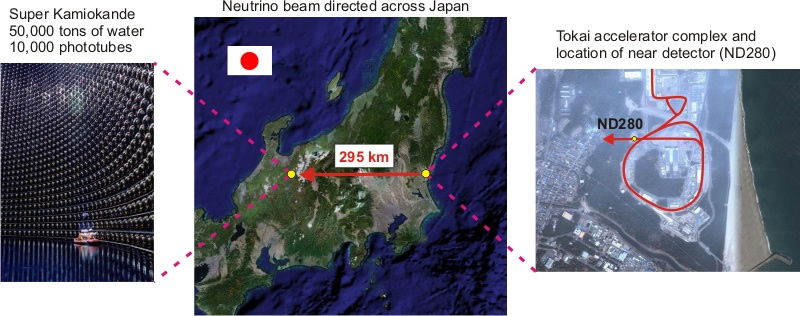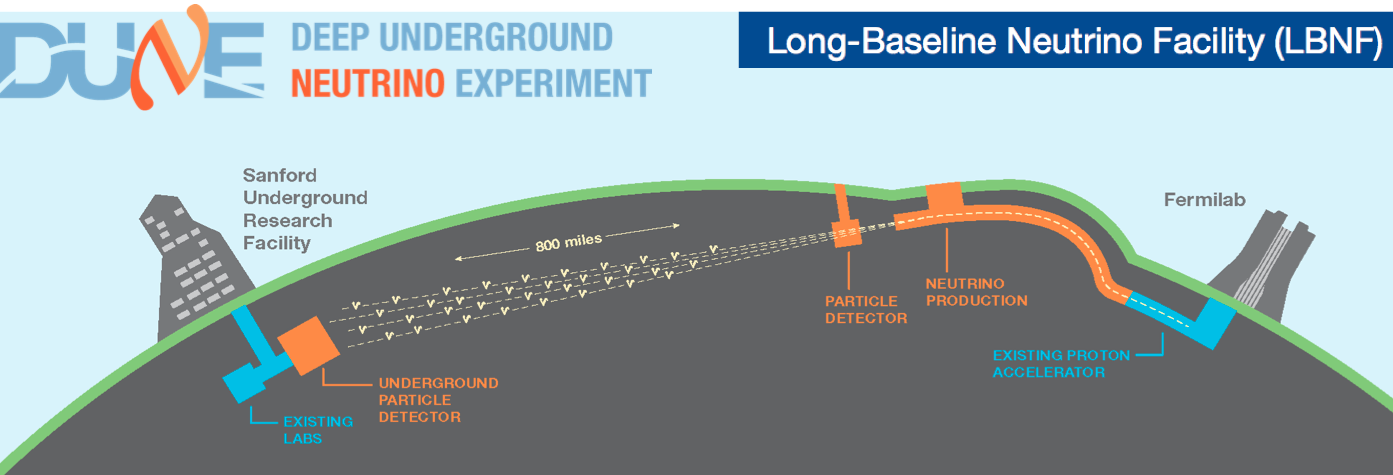
High Energy/Neutrino Physics
Faculty:
The high-energy physics group focuses on two areas of research, neutrino physics and the highest energy cosmic rays. Our research is addressing very exciting puzzles that nature has to offer.
Despite the fact that neutrinos are some of the most abundant particles in the Universe they are difficult to detect. We require very large and sophisticated detectors to observe and study them. Our detectors are located in underground laboratories to shield against cosmic rays and related particles which could create undesirable signals inside the detector.
Neutrinos are naturally produced in fundamental particle interactions in Earth’s atmosphere, the Sun and Supernovae. They are also generated in nuclear reactors and we use particle accelerators to create intense beams of neutrinos.
The highest energy cosmic rays are particles arriving on Earth with energies many orders of magnitude larger than what could be accomplished with man-made particle accelerators. The composition of these highest energy cosmic particles and their origins are an active area of our studies.
We are involved in a number of experimental projects to collect data on neutrinos and the highest energy cosmic rays in order to solve the mysteries associated with these particles.
Neutrino Physics
Neutrinos are a source of surprises and many of their fundamental properties and characteristics remain to be explored. It is a challenge to study neutrinos because they rarely interact with matter and hence are difficult to detect. Experiments have provided evidence for the existence of three types of neutrinos. Recent measurements demonstrate that neutrinos can change from one type into another (they 'oscillate') as they travel from their source to a suitably located distant detector. This mixing of neutrino types is very different from what has been observed in the quark sector where mixing between quark types is comparatively small.
We are working on experiments to accurately measure the parameters that describe neutrino mixing. One of these experiments is the neutrino long baseline experiment T2K (Tokai to Kamiokande) which measures several of the neutrino oscillation parameters. We are actively involved in the T2K experiment which is located in Japan and directs a muon-neutrino beam through a near detector complex and towards the 295 km distant Super-Kamiokande water Cherenkov detector.
A comparison of measurements at the near detector, which samples the un-oscillated neutrino beam, with observations made by the far detector allows to study neutrino oscillation characteristics. At T2K we also study the properties of anti-neutrinos and we are particularly interested to learn whether they behave differently from neutrinos. Our recent results give a first hint that neutrinos and anti-neutrinos may indeed behave differently.
An asymmetry in the behavior between matter and anti-matter (which is referred to as ‘charge-parity’ or ‘CP-violation’) in the neutrino sector might provide insight into the origin of our Universe and our very own existence. We are merely at the beginning of what promises to be an exciting exploration of uncharted physics terrain.

Schematic layout of the DUNE experiment
The Deep Underground Neutrino Experiment (DUNE) will send a neutrino beam from Fermilab, Illinois towards a large detector housed at the Sanford Underground Research Facility (SURF), South Dakota and aims to have world leading sensitivity to an asymmetry between neutrinos and their anti-matter partners. In addition, we will measure other neutrino properties such as the ordering of neutrino masses (the 'mass hierarchy'), search for nucleon decay and possibly detect neutrinos from not too distant Supernovae.
DUNE is an international collaboration amongst many scientists at numerous institutions. Together we are optimizing the layout, performing research and development of components and we are preparing construction of the experiment. A number of smaller prototype detectors and test-beam projects (ProtoDUNE) at CERN serve as important milestone towards the realization of a large (tens of kilotons) liquid argon detector as is anticipated for DUNE.
Previously we studied neutrinos from the Sun and also searched for additional types of neutrinos:
Neutrinos are produced in the fusion reactions that fuel stars. Hence, our Sun is a powerful source of neutrinos. Numerous experiments have observed solar neutrinos but the observed solar neutrino flux was lower than theoretical models predicted; a dilemma that was termed the 'solar neutrino problem'. In the early 2000's the Sudbury Neutrino Observatory (SNO) demonstrated conclusively that the discrepancy between theoretical expectations and data is resolved by neutrino oscillations. As the neutrinos travel from Sun to Earth they change their type. Earlier experiments had only been sensitive to one type of neutrino and therefore they were only able to detect a fraction of the expected solar neutrinos. The SNO experiment which consisted of 1 kton of heavy water, which was viewed by nearly 10,000 light sensitive photo-sensors was able to distinguish between different types of neutrinos and was able to observe all three types. We observed the solar neutrino flux of all three types of neutrinos to agree very well with predictions. Prof. A. McDonald, the director of SNO was awarded the 2015 Nobel Prize in physics for these measurements.
Three types of neutrinos are known to exist but results from the 'Liquid Scintillator Neutrino Detector' (LSND) indicate that a fourth and rather mysterious neutrino might exist. The MiniBooNE experiment at Fermilab explored the possibility of the existence of such a new type (e.g. sterile) neutrino. The experiment studied neutrinos coming from a man-made neutrino beam but was not able to unequivocally refute or confirm the existence of sterile neutrinos. Follow-up experiments are in preparation.
The Highest Energy Cosmic Rays
The highest energy cosmic rays are particles that have been observed on Earth with energies in excess of 1020eV. One of the largest mysteries associated with the highest energy cosmic rays is their origin: Where do they come from? What astrophysical objects and mechanisms can accelerate particles to energies of 1020eV and above ? What exactly are these particles?
The Pierre Auger Observatory is a project which is currently taking data to answer the above questions. The observatory is located in Mendoza Province, Argentina. It consists of an array of 1600 regularly spaced water Cherenkov detectors spread out over an area the size of Rhode Island and a series of fluorescence telescopes which monitor the atmosphere above the detector array. The strengths of both of these detection techniques complement each other and allow collection of complementary information on the highest energy cosmic rays.
